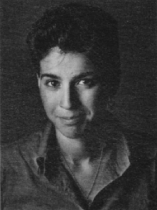
Education: California State University, Long Beach, photojournalism major.
Before the Series: Customer services rep for the Times in 1980, then a copy messenger and news desk assistant.
After the Prize: Monica completed two photography internships for the Los Angeles Times. She moved to New York City in 1986 for her first staff photography job, at the New York Daily News. She traveled to Southeast Asia on assignment, returning several times to work on her own projects in Vietnam. She was hired by the New York Times as a staff photographer in 1992. In 1997, she became the NYT’s Los Angeles Bureau photographer, traveling extensively throughout the Western U.S. She has covered a wide variety of stories spanning major news events, politics, the environment, social issues and poverty, immigration, and pop culture, including 17 Academy Awards ceremonies. She has photographed every presidential campaign since 1988. In 2016, she left the New York Times after 26 years; she lives and works in L.A., her hometown.
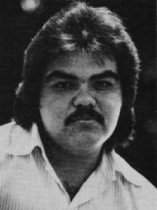
Education: California State University, Long Beach, photojournalism major.
Before the Series: Student journalist at newspapers at Cal State Long Beach and East Los Angeles College.
After the Prize: Aurelio completed his 1983 internship and received a second one at the Los Angeles Times in 1984. He returned to college and later was hired at the Times in 1987. He worked as a staff photographer in the Orange County edition of the Times until 2000. From 2000 to 2009, he was a photo editor in the main Times office. He left the Times in 2009 and is a stay-at-home father living in East Los Angeles.
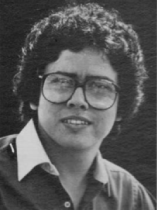
Education: Whittier College; California State University, Long Beach; B.A.
Before the Series: IBM, the Norwalk Call newspaper, the Herald American newspaper. Joined the Times fulltime in 1982.
After the Prize: Rick continued to work at the Times until 1995. He was part of teams awarded the Pulitzer Prize for coverage of the 1992 L.A. riots and the 1994 Northridge earthquake. He used his engineering abilities to invent the Spinshot camera, which spins to take 360-degree images, and to patent its design. After leaving the Times, he worked with 3D imaging and taught classes around the globe. In 2000, he used this knowledge to found a 3D Imaging Company. As CEO and an innovator in 3D imaging and design, he developed “Get Flipped” software to create 3D and 2D flip photo souvenirs and keepsakes in minutes. He died of cancer on Nov. 7, 2005 at age 48.

Education: San Fernando Valley State College (now Cal State Northridge), B.A., 1970. Nieman Fellowship, Harvard University, 1987-88.
Before the Series: Edited a Chicano student newspaper in college; worked as an intern at the Times in 1970 and was hired fulltime.
After the Prize: Frank was promoted to deputy editor of the editorial page and, later, to associate editor. As a Times columnist for 23 years, he produced almost 450 columns, ranging from political analyses to loving descriptions of his son, Frankie, who coped with autism. He also had a daughter, Valentina Marisol. He led a coverage-focused Latino Initiative in the late 1990s at the newspaper. He was inducted into the Hall of Fame of the National Association of Hispanic Journalists (NAHJ) in 2002. He served on the board of the Committee to Protect Journalists and other news media organizations. He died at age 55 on Feb. 19, 2004. His wife, Magdalena, and Frank Sotomayor compiled a book of his columns, “Frank del Olmo: Commentaries of His Times.” A Los Angeles elementary school was named in his honor. Among other honors, the Frank del Olmo Print Journalist of the Year award was established by NAHJ.
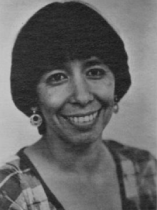
Education: University of Arizona, B.A. 1971; UC San Diego, M.A., 1997.
Before the Series: English and journalism high school teacher in Southern Arizona; Graduated from Summer Program for Minority Journalists, 1979; reporter, Stockton Record. Began at Times in 1981.
After the Prize: Virginia left the Times in 1998 and became a journalism professor at the University of Arizona in Tucson, where she received both community and university awards. In 1992, she attended graduate school at the University of California, San Diego, where she served as a teaching assistant in the Department of Communication and its master teacher for teaching assistants. In 1999, she became a journalism and English professor at San Diego Mesa College, where she also advised its award-winning campus newspaper. In 2005, she transferred to San Diego City College, where she is a professor of English. She teaches some of her classes from a Chicano perspective. She was inducted into the Hall of Fame of Santa Cruz Valley Union High School in Eloy, Ariz.
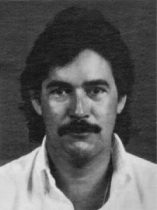
Education: University of Arizona, B.A. Journalism, 1972.
Before the Series: Photographer, the Arizona Daily Star, 1966-80. Hired as Times staff photographer in 1980.
After the Prize: Leaving the Times in 1992, José returned to Tucson and ran a Latino art gallery, bringing in nationally recognized artists. He received national and state grants and freelanced for NCLR, NALEO and other organizations. But most important, Galvez said, was his marriage to Anne and the birth of their son, Nicolás. In 2004, they moved to Durham, N.C., and he has been photographing the impact of Latinos in the South and Eastern regions of the U.S. He wrote “Shine Boy,” about his experience of first entering a newsroom by shining shoes at the Arizona Daily Star. He collaborated and did photos for three other books, “Vatos,” “Americanos” and “Beloved Land.” He speaks about his life, photography and Latino culture at colleges, universities and libraries in the Eastern U.S.
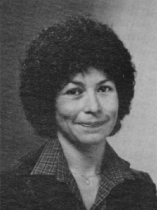
Education: San Diego State University, B.A, 1973.
Before the Series: Reporter at San Diego Union, San Luis Obispo Telegram-Tribune, San Jose Mercury News.
After the Prize: After working at the Times for 12 years, Marita married Bob Secter, the Times' correspondent in Chicago and moved there in 1990. After their son, Adrian, was born, they moved to the Oak Park area. As she was raising Adrian, she participated in numerous community, church and school activities and volunteered in organizations serving children, the developmentally disabled and immigrants. After Adrian entered college, she began work as an adult ESL teacher in Chicago's most segregated Latino barrios. She said: “If anyone had told me that I would be a teacher someday, I would have scoffed at the idea. But the first day I entered a classroom full of Latinas eager to learn a new language, it was as if I had come home. It's been a most fulfilling adventure.”
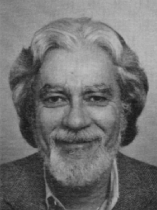
Education: Attended San Francisco State and, briefly, University of California, Berkeley.
Before the Series: After serving in the Korean War, he reported at the Richmond Independent and from 1955 to 1971, at the Oakland Tribune before joining the Times in 1972.
After the Prize: Continuing at the Times, Al became a columnist in January, 1984, and soon was a favorite of readers. He got a buyout package in 2007 only to be rehired a month later after readers’ protests. He left the Times in 2009 but continued writing a column at the Los Angeles Daily News. He wrote scripts for several TV shows, including “Hawaii Five-O.” Among his books: “City of Angels: A Drive-By Portrait of L.A.," 1996; "The Last City Room," 2000; "I'll Be Damned If I'll Die in Oakland: A Sort of Travel Memoir," 2003; "Barkley: A Dog's Journey," 2006; and collections of his columns. He won the National Headliner Award as the best columnist in the United States in 1988, was named a fellow of the Society of Professional Journalists and was honored by CCNMA: Latino Journalists of California. He died in 2015 at age 85.

Education: Texas Tech University, B.A., 1975.
Before the Series: Reporter, Dallas Times-Herald. He joined the Times in 1978 as a reporter in the San Diego edition.
After the Prize: Robert left the Times and earned an MBA at UCLA in 1986. After graduation, he held a number of high executive positions at the Wall Street Journal, including circulation director for the Caribbean and Latin America and deputy circulation director. He moved to Business Week in 1994 as a vice president for circulation. He wrote the book “Right Before Our Eyes: Latinos Past, Present and Future.” He taught at Rutgers University for eight years and was director/editor of the Latino Information Network there. After returning to his native Lubbock, Tex., he died of cancer on Oct. 22, 2015, at age 62. He was inducted posthumously into the Hall of Fame of the National Association of Hispanic Journalists.
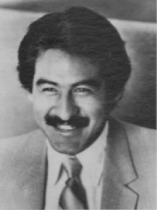
Education: Pepperdine University, B.A., 1978.
Before the Series: Managing editor, Nuestro magazine, New York.
After the Prize: Julio continued to work at the Times until 1995, then became executive director of CCNMA: Latino Journalists of California in 1997. He completed the Maynard Institute for Journalism Education’s Management Training Center at Northwestern University in 1996 and served as executive-in-residence for the program in 2001. He served on the founding board of the National Association of Hispanic Journalists and on the board of Unity: Journalists of Color, which oversaw the planning of Unity ’94. In 1996, he received the NAHJ President’s Award for Lifetime Achievement. For the last 19 years, he has taught journalism courses at Cal State Northridge and the University of Southern California.
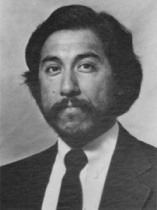
Education: Cal Poly San Luis Obispo, B.A. 1969.
Before the Series: Reporter, Copley News Service and San Diego Union. Joined Times in 1978.
After the Prize: George was a member of reporting teams that won Pulitzer Prizes for Times coverage of the 1992 Los Angeles riots and the 1994 Northridge earthquake. Later, he became a Metro section columnist and co-anchored a current-affairs TV program on KCET, the local PBS station. He also taught an evening course at USC. Wounded in the Vietnam war, he regularly took part in ceremonies in East L.A. when Veterans Day and Memorial Day rolled around. He left the Times in 2003 to become journalism department chair at Cal Poly San Luis Obispo. In 2007, he was inducted into the NAHJ Hall of Fame. He continued to teach at Cal Poly and worked as an editor at CalCoastNews.com until his death in July 2011 at age 63. He was inducted posthumously into the Cal Poly Mustang Student Media Hall of Fame.
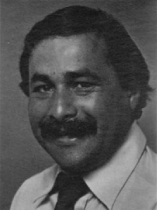
Education: San Jose State University, B.A. 1975.
Before the Series: Truck driver, E. Reyes Trucking. Freelance photographer. Graduate, Summer Program for Minority Journalists, 1976 at UC Berkeley. Reporter/photographer, San Dieguito Citizen. Reporter, Oregon Statesman.
After the Prize: David continued to work for the Times, primarily in Orange County, as a general assignment reporter until 2008. In addition to reporting, he wrote a surfing column for the Times with a Huntington Beach surf celebrity. He covered U.S. surfing teams that competed in Indonesia, Brazil, and Tahiti. He was assigned to help cover the closing of El Toro Marine air base and a controversial proposal for its conversion to a commercial airport. After nearly three decades at the Times, he transitioned to freelance writing before working as a consultant for a law firm. Now retired, he is married to Gloria O. Reyes, who directs a nonprofit in Orange County. He has three daughters, Rachel, Regina and Renee and a stepdaughter, Yolanda Summerhill.
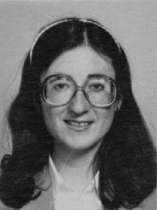
Education: California State University, Northridge, B.A. journalism, 1979.
Before the Series: KLCS-TV, Los Angeles, news editor, stage manager, 1975-1979. After college graduation, she worked as a business reporter at the El Paso Times.
After the Prize: Nancy continues to work in the Business section of the Los Angeles Times, which she joined in 1982, covering small and minority business. She then moved to the savings and loan beat followed by a long stretch of general assignment business reporting. In 1998, she took on the energy beat as California deregulated its electricity industry, setting the stage for the 2000-01 energy crisis. She was Nancy Rivera while working on the Latino series and became Nancy Rivera Brooks when she married another journalist, Jim Brooks, a page designer at the Times. They have two children, Lena and Cord. In 2004, she was promoted to assistant business editor and continues in that position.
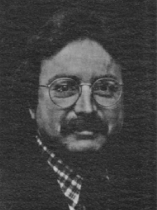
Education: California State University, Los Angeles, B.A., 1978.
Before the Series: Louis worked at various fast-food and factory jobs and began work at the Times in 1973 as a floor sweeper, then copy messenger in the news department. He graduated from the Summer Program at UC Berkeley in 1979 and became a reporter at the Tucson Citizen
After the Prize: Louis is a general assignment reporter at the Times, specializing in coverage of issues ranging from religion, culture, and the environment to crime, politics and water. He has been a board member of CCNMA: Latino Journalists of California and teaches a course in environmental journalism at Antioch University. He is also author of the book, “Master of the Mysteries: the Life of Manly Palmer Hall.” An expanded version of the book was published in 2016 by Feral House. He is married to Kristina Lindgren, a former Times reporter/editor, and they have a daughter, Sophia.
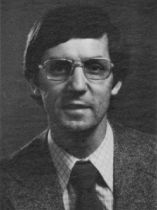
Education: University of Arizona, B.A. 1966; Stanford, M.A., 1967; Nieman Fellowship, Harvard University, 1985-86.
Before the Series: Reporter/Copy Editor at Arizona Daily Star, Philadelphia Inquirer and Pacific Stars and Stripes (during Army tour). He joined the Times in 1970.
After the Prize: Frank was a Times assistant city editor from 1983 to 2001, including three years as editor of a bilingual supplement. In 2001, he became assistant hiring and training editor, working with young journalists of color. A co-founder of the Maynard Institute for Journalism Education, he was inducted into NAHJ’s Hall of Fame, 2002. He retired from The Times in 2005, worked at Institute for Justice and Journalism, taught at USC and was advisor to USC’s student newspaper. He has two children, Teresa and Stephen. After the death of his first wife, Meri, in 2009, he returned to his hometown Tucson. He married Barbara Camacho Benton in 2013. He wrote “Para Los Niños: For the Children, Improving Education for Mexican Americans,” 1974, and was co-editor of “Frank del Olmo: Commentaries on His Times, 2004.” He chairs the Advisory Council at the University of Arizona School of Journalism.
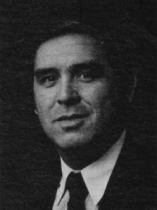
Education: University of Texas (Austin), B.A. 1965.
Before the Series: 1966-68, U.S. Army, infantry, CID. Then worked in Washington and New York as a reporter with the New York Times. Later, he was city editor, San Antonio Express and L.A. Times Assistant city editor, 1979-80 and Mexico City bureau correspondent, 1980-85.
After the Prize: Juan became an on-air reporter at CBS News, based in Miami and covering Latin America from Mexico to the Southern Cone, including Cuba, Haiti and the rest of the Caribbean. He later taught print and TV reporting at Florida International University in Miami. In 1999, he became foreign/national editor of the Miami Herald and shared a 2001 Pulitzer Prize for breaking news with other staffers for coverage of the Elian Gonzalez saga. From 2003 to the end of 2016, he was opinion page editor and chief editorial writer for the Herald. He is married to Patricia, a retired attorney, and they have two grown children.

Education: B.A. Anthropology, M.A., Comparative Literature and Spanish, Cal State University Long Beach, 1978; M.S. in Journalism, Northwestern’s Medill School of Journalism, 1981.
Before the Series: Edited small press literary and general interest magazines, 1976-81. Worked at Times, 1981-89.
After the Prize: Victor has spent more than 27 years teaching journalism and ethnic studies at California Polytechnic University, San Luis Obispo and California State University, Long Beach. Honors include a Fulbright Research Grant (2014-15); Fellow, Radcliffe Institute for Advanced Study (2011-12); Endowed Chair in Humanities, Cal State L.A., 2003-05; Visiting Scholar, 2002-03, UC Santa Barbara. Books: “City of Industry: Genealogies of Power in Southern California,” (Rutgers University Press, 2009); “Encarnacion Pinedo’s Kitchen: Mexican Cooking in Nineteenth-Century California,” (UC Press, 2003); “Latino Metropolis,” (University of Minnesota Press, 2000); “Recipe of Memory: Five Generations of Mexican Cuisine,” (The New Press, 1995), and “Calendar of Souls, Wheel of Fire,” (Pacific Writers Press), 1991. Forthcoming Books: “Dispatches from a Decolonial Rebellion: Latina/o Non-fiction in the L.A. Borderlands,” University of Nebraska Press, scheduled for fall 2017; “The Poetics of Fire: Metaphors of Chile-Eating in The Borderlands,” UC Press, 2018.